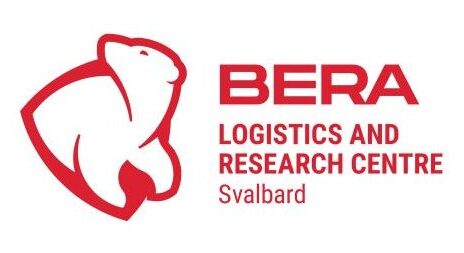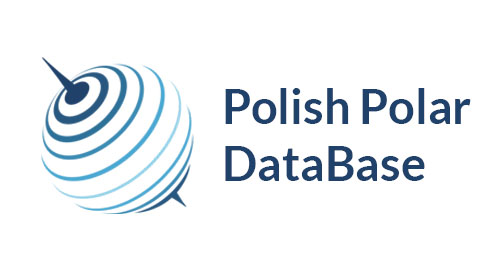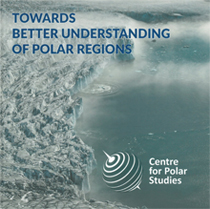The list of proposed topics for the academic year 2015/2016 [expand title=”more”]
Faculty of Earth Sciences, University of Silesia
- Conditions and long-term variability of liquid and solid precipitation occurrence on Spitsbergen on the background of current climate change.
- The water drainage in the polithermal glacial system based on radio-echo soundings and model solutions.
- Functioning of the nival system in polar environment basing upon Svalbard as an example.
- An attempt to determine the prevalence of the lower limit of permafrost occurrence in the medium and high mountains massifs in Central Europe and Spitsbergen using geophysical methods and climatological analysis.
- Relationship of selected landforms of periglacial environment according to permafrost on the basis of geophysical surveys of selected sites in Hornsund area, Spitsbergen.
- An attempt to determine glacier facies on Svalbard polythermal glaciers by means of remote sensing and field methods.
- Energy balance and effective ablation of crevassed zones on the Spitsbergen glaciers.
Institute of Geophysics PAS
- Stochastic models of geometry and dynamics of fracture networks of polar ice.
- Modelling of polar phenomena time series by the nonlinear stochastic Langevin equation.
- Impact of snow redeposition on mass balance of polar glaciers.
- Thermal and mechanical ablation of tidewater glaciers based on Terrestrial Laser Scanning surveys.
- Multiparameter full-waveform inversion of regional marine reflection data.
- Modern statistical methods of analysis of risk of hydrological extreme phenomena in polar environment.
- LIDAR and photometric measurements synergy to investigation of aerosol variability in polar regions.
Institute of Oceanology PAS
- Application of numerical modeling in investigations of changes in the ecosystem of West Spitsbergen fjords.
- A statistical analysis of Arctic climate system variability in the era of satellite observations.
- Interactions between large-scale atmospheric and oceanic processes and local hydrographic conditions in selected arctic fjords. [/expand]
The list of proposed topics for the academic year 2014/2015 [expand title=”more”]
Faculty of Earth Sciences, University of Silesia
- An attempt to determine superimposed ice zones on polythermal glaciers by means of satellite remote sensing and field methods.
- Application of satellite imagery for studies of tidewater glaciers dynamics (on Spitsbergen as an example).
- Quantification of morphology features of outwash plains of different origin.
- Pattern of snow cover thickness on Spitsbergen glaciers taking into account influence of orography and re-deposition.
- Changes of water content and drainage in polythermal glaciers based on radio echo-sounding data.
- Energy balance and effective ablation of crevassed zones on the Spitsbergen glaciers.
- The main path of the depression tracks in the Atlantic sector of the Arctic.
- Long-term variability of thermal and baric gradients between the Arctic and neighboring areas.
- Occurrence of liquid precipitation in winter season at Spitsbergen on the background of current climate change.
- Cryomineral formations of glaciers: their peculiarities, genesis, differentiation and scientific meaning.
- Comprehensive evaluation of Arctic Region for tourism purposes.
Institute of Geophysics PAS
- The evolution of marine sedimentation processes as a result of the Hans Glacier recesion (Isbjørnhamna, Spitsbergen).
- The impact of the sea ice conditions on the wave propagation and coastal erosion based on Isbjørnhamna and Recherchefjorden (Spitsbergen).
- Variability of the surface UV radiation reaching ground-level in the polar region.
- Variability of the ground-albedo in different time scales and its impact on the surface UV level.
- Flow characteristics in ice covered rivers.
- Projections of changes in the mass of glaciers in the varying climatic conditions.
- Seasonaldynamics oftemperature variationand the processes ofsedimentationin polar rivers and lakes.
- Icequakes focal mechanism analysis.
- Scaling relations in icequakes.
- Modeling dynamics of ice-quakes through the fiber bundle model approach.
- Modelling of icequake time series by the nonlinear stochastic Langevin equation.
- Geotectonic and paleogeographic reconstruction of the Eastern Svalbard based on palaeomagnetic investigations of the Neoproterozoic and Paleozoic successions of Nordaustlandet (Svalbard Archipelago).
- Tidal instabilities in the Earth’s core and magnetic field oscillations in polar regions.
- Impact of snow redeposition on mass balance of Arctic and Antarctic glaciers.
Institute of Oceanology PAS
- The origins, distribution and properties of organic matter in the Arctic experimental and modelling approach.
- Cycling of contaminants in the Arctic.
- Zooplankton as the basic food source for bi-environmental birds in the warming Arctic.
- Processes of colonization and succession in polar marine ecosystems.
- Studies of marine aerosols in the marine boundary layer.
- Study of mass, momentum and climate relevant gas fluxes across the sea surface in European Arctic.
- Impact of aerosols on climate changes.
- A statistical analysis of Arctic climate system variability in the era of satellite observations.
- Transformation of water masses in the Nordic Seas.
- The role of benthic megafauna in Spitsbergen fiords.
- Foraminifera size as a climate change proxy in Holocene studies.
- Size spectra in Arctic macrozoobenthos in response to climate change.
There is also possibility of proposing doctoral dissertation topic.
[/expand]







